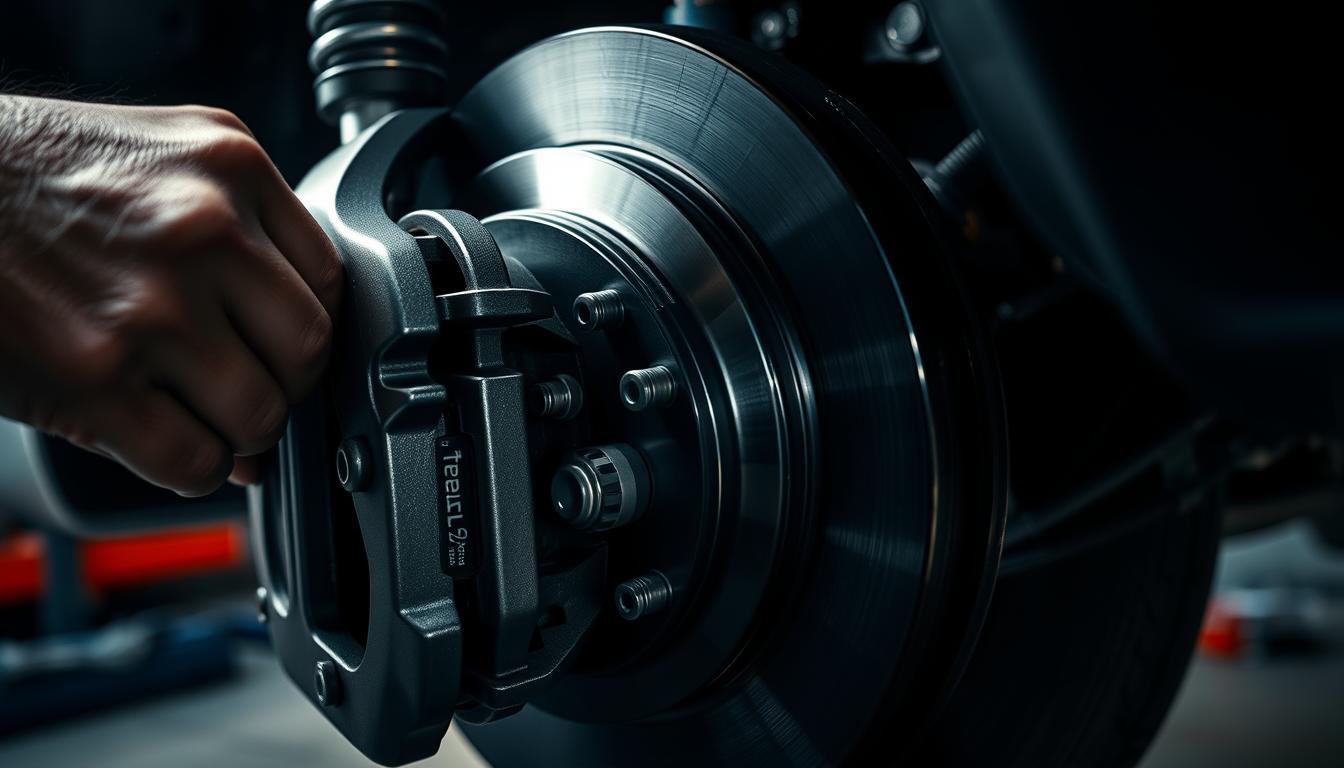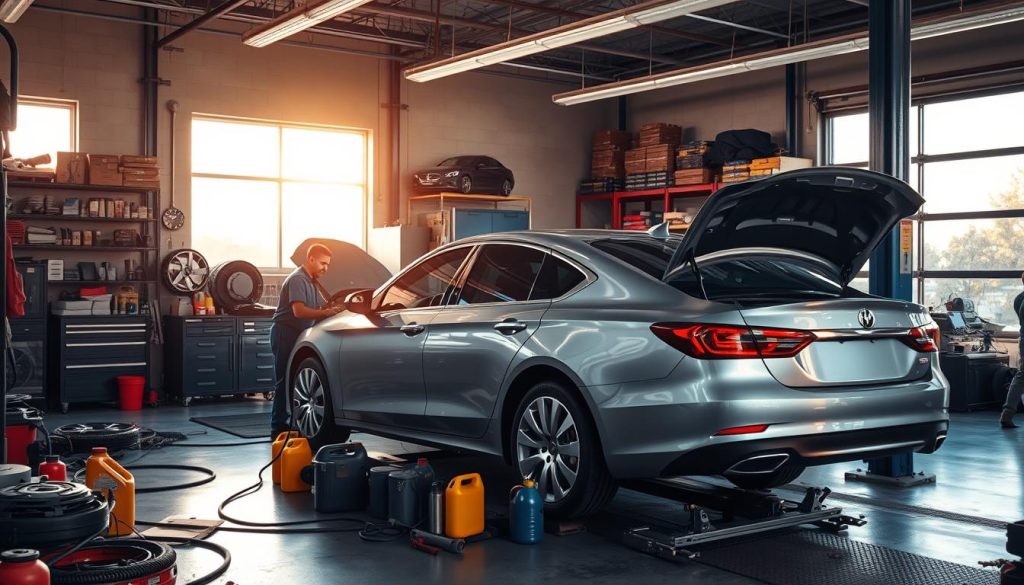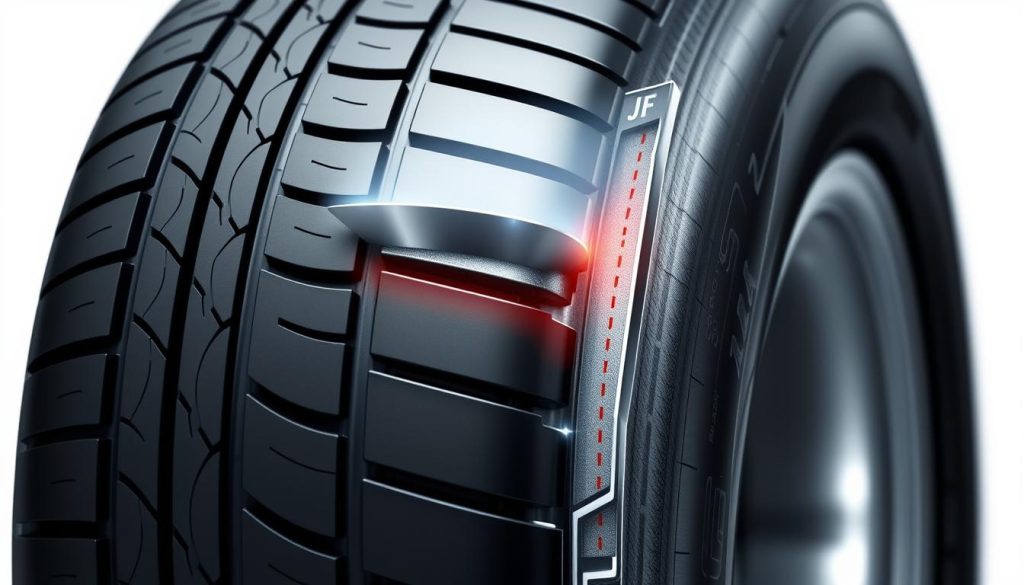Hearing unexpected sounds from your vehicle can be alarming. When metallic scraping occurs during stops, it’s more than just an annoyance—it’s a red flag. This harsh noise often signals metal-on-metal contact within your car’s stopping mechanism. Ignoring it could lead to costly repairs or dangerous driving conditions.
Most drivers experience this issue when pressing the brake pedal. The sound typically means protective components have worn down completely. Without proper cushioning between critical parts, friction increases dramatically. This accelerates damage to essential systems and reduces your ability to stop quickly.
Immediate attention matters because every delay raises repair costs and safety risks. Worn parts can damage rotors, calipers, and other expensive components. More importantly, compromised stopping power endangers you, your passengers, and others on the road.
These warning noises might appear during routine stops or sudden braking. Whether you’re navigating city traffic or highway speeds, the problem demands professional diagnosis. Early intervention preserves your car’s performance and prevents complete system failure.
Key Takeaways
- Metal-on-metal contact creates distinct scraping sounds during stops
- Worn components reduce stopping power and increase accident risks
- Delayed repairs lead to more extensive (and expensive) system damage
- Noises may occur during both gradual stops and emergency braking
- Professional inspection ensures accurate diagnosis and proper fixes
- Timely action protects your safety and prevents costly replacements
Grinding Brakes: What the Noise Means for Your Safety
Your car communicates through sounds, and one metallic cry demands immediate action. That harsh scraping during stops isn’t just irritating—it’s your vehicle’s distress signal. Let’s decode what this means for your protection on the road.
Identifying the Distinct Metallic Sound
Metal grinding differs from squeaks or squeals. Imagine two steel plates scraping together—that’s the raw, gritty tone signaling complete pad wear. The sound often pulses with wheel rotation and intensifies when slowing down.
You might feel vibrations through the steering wheel or pedal. This physical feedback confirms metal components are making direct contact. Unlike temporary noise from wet rotors, this harsh scraping persists across drives.
Urgency and Safety Concerns on the Road
Every mile driven with this noise risks catastrophic failure. The National Highway Traffic Safety Administration links 1 in 4 crashes to braking issues. Worn components double stopping distances in emergencies.
Three critical risks emerge:
- Rotors sustain irreversible damage
- Hydraulic systems overheat and fail
- Stopping power drops by 40-60%
Immediate repairs prevent costly replacements and protect everyone sharing the road. Don’t gamble with compromised safety—professional inspection takes priority.
Common Causes of Brake Grinding
Unusual noises during stops often trace back to specific mechanical failures. Let’s break down the primary culprits behind these concerning sounds and their implications for your vehicle.
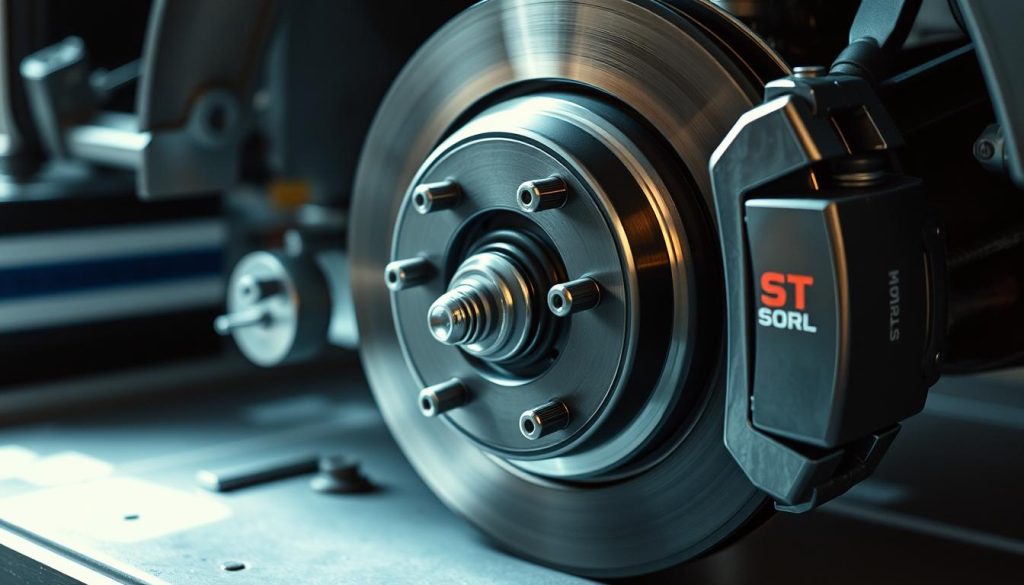
Worn Brake Pads and Exposed Metal Backing
Most drivers first encounter issues when their pads reach critical wear levels. Modern brake pads combine graphite, copper, and brass compounds designed for smooth operation. Once this material wears thin, the steel plate beneath contacts rotors directly.
This metal-on-metal interaction creates harsh scraping vibrations. You’ll typically notice the noise intensifying during gradual stops. Immediate replacement prevents rotor scoring and preserves stopping power.
Debris, Rust, and Corroded Rotors
Environmental factors dramatically impact rotor surfaces. Road salt, moisture, and dirt accelerate corrosion over time. Three key problems emerge:
- Pitted surfaces from rust accumulation
- Warped discs causing uneven pad contact
- Foreign objects lodged between components
These conditions force pads to scrape against irregular surfaces. Regular cleaning helps maintain smooth rotor faces.
Faulty Wheel Bearings and Caliper Issues
Wheel bearings protect rotating assemblies from friction damage. When they fail, metallic grinding accompanies wheel movement. Similarly, stuck calipers create constant pad pressure.
Key warning signs include:
- Noise changes during turns
- Uneven pad wear patterns
- Excessive heat from wheels
Professional diagnosis identifies whether bearings, calipers, or both need attention. Timely repairs prevent cascading system failures.
Effective Brake System Inspection and Diagnosis
Proper maintenance starts with understanding your vehicle’s critical systems. A thorough evaluation helps catch issues before they escalate. We’ll walk through key inspection steps every driver should know.
Evaluating Brake Pads and Rotors
Start by examining pad thickness through wheel spokes. Industry standards recommend replacement at 1/4 inch remaining material. Look for uneven wear patterns or metal shavings indicating deterioration.
Rotors require equal attention. Check for deep grooves, rust spots, or warping. These imperfections create friction hotspots that reduce stopping efficiency. Smooth surfaces ensure consistent contact with pads.
Assessing Caliper Functionality and Hardware
Calipers control pad movement during stops. Certified technicians test three critical aspects:
- Piston retraction capability
- Slide pin lubrication levels
- Seal integrity against contaminants
Sticking components cause premature wear and uneven pressure distribution. Professionals use specialized tools to measure hydraulic performance and internal corrosion.
While visual checks help, comprehensive diagnosis requires expert skills. Mechanics assess hidden elements like fluid quality and valve operation. Schedule annual inspections to maintain peak performance and safety.
Preventative Maintenance and Brake Care Tips
Proactive care keeps your vehicle’s stopping power reliable and responsive. Simple routines extend component life and prevent 80% of common issues drivers face. Let’s explore practical strategies that protect your investment and safety.
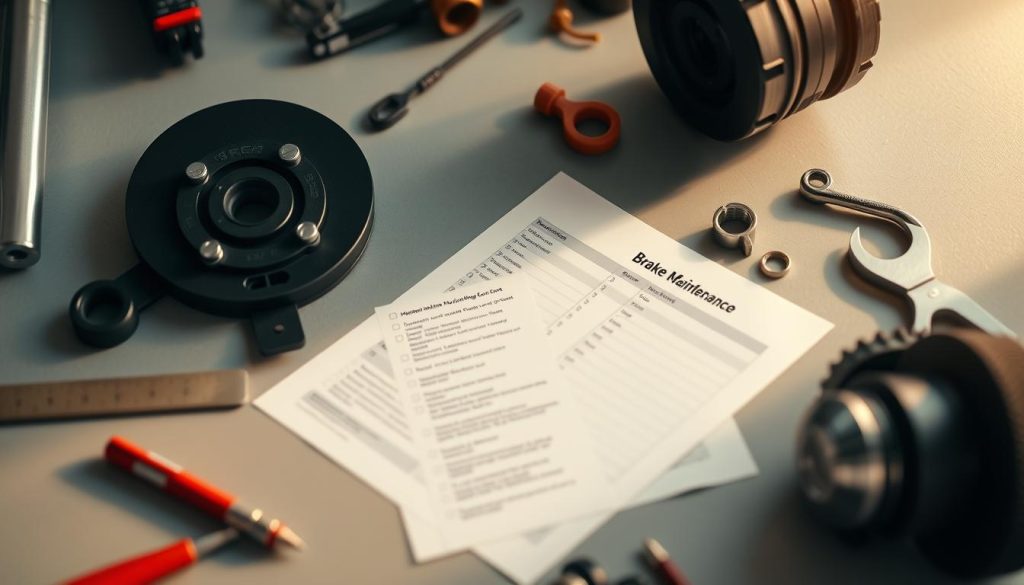
Essential Inspection and Lubrication Routines
Schedule pad inspections every 6,000 miles. Mechanics measure remaining material and check for uneven wear. Replace pads at 1/4-inch thickness to avoid metal contact that damages rotors.
Monthly lubrication prevents rust in critical areas. Focus on:
- Caliper slide pins
- Contact points between pads and hardware
- Bolts securing caliper brackets
Use high-temperature grease specifically designed for braking systems. This reduces friction and ensures smooth operation during stops.
Brake fluid changes every two years maintain hydraulic efficiency. Old fluid absorbs moisture, leading to internal corrosion and spongy pedal feel. Professionals test moisture content during routine service.
Smart driving habits significantly reduce wear. Gradually slow down instead of slamming pedals. Maintain safe following distances to minimize sudden stops. These practices lower heat buildup in your car’s friction components.
Preventative care costs 3-5 times less than emergency repairs. Quality parts and timely service protect rotors from scoring. Address minor issues before they escalate into system-wide failures.
Solutions for Grinding Brakes: Repair and Replacement Strategies
When your car signals trouble through unsettling sounds, swift action preserves both safety and savings. Our team prioritizes practical solutions that address core mechanical concerns while preventing future complications.
Critical Component Replacement Timing
Immediate pad replacement stops destructive metal contact. Modern vehicles often include wear indicators, but audible scraping means you’ve missed the warning window. We recommend:
- Installing premium friction materials
- Resurfacing rotors with minor damage
- Full rotor swaps for warped/damaged units
Always replace components in pairs to maintain balanced pressure distribution. This prevents uneven wear and steering wheel vibrations during stops.
Expert Intervention Requirements
Complex issues demand professional diagnostics. Our certified technicians handle three critical scenarios:
- ABS sensor malfunctions
- Hydraulic system failures
- Caliper alignment problems
Specialized equipment detects hidden issues like fluid contamination or air pockets. We use OEM-grade parts that exceed manufacturer durability standards.
Don’t risk DIY fixes on safety systems – trust Heaven Automotive’s 20-year experts. Our warranty-backed service ensures precise repairs and lasting performance. Schedule your inspection today before minor issues become major expenses.
Conclusion
That unsettling metallic scrape during stops isn’t just noise—it’s your car’s final warning. When components wear down completely, every delay risks catastrophic system failure and compromised safety. Worn pads, debris buildup, or corroded rotors demand expert attention to restore proper function.
Ignoring these warnings often leads to costlier repairs. Damaged rotors, seized calipers, and hydraulic issues multiply expenses rapidly. Timely inspections catch problems early, preserving your vehicle’s stopping power and preventing roadside emergencies.
Our certified technicians at Heaven Automotive diagnose root causes efficiently. We replace worn parts, resurface rotors, and ensure balanced pressure across all wheels. Don’t gamble with uncertain stopping distances—schedule your brake service today. Your safety deserves nothing less than precision repairs from trusted professionals.

